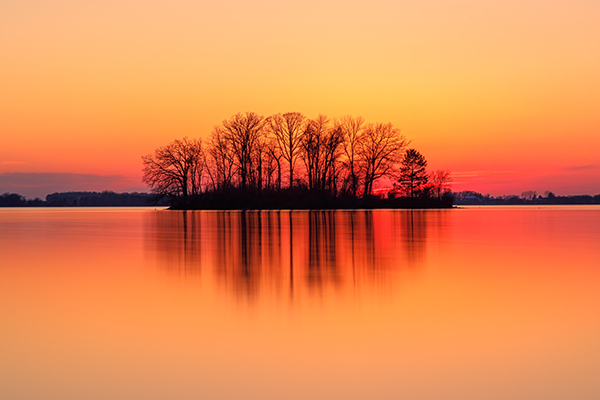Shape and form are two terms often confused or lumped together. They both refer to the use of geometric objects, and are two of the most important elements of art along with texture, space, and color. Like these other elements, they also play an important role in photography. In this post, we explore the difference between shape and form. We’ll start with shape, which is easier to grasp. Then, we’ll show some examples of form in photography and explain exactly what this means.
Shape in Photography

Shape refers to a two-dimensional, flat, enclosed object. Shapes have no depth; just clearly delineated width and length. The most intuitive type of shape is a geometric shape, which has straight, uniform and definite angles and lines, like a triangle or square.
However, shapes can also be organic or naturally occurring, and in these cases are often curvy or irregular in appearance. Celebrated photographer and conservationist Ansel Adams regularly captured natural, irregular shapes in his stunning landscape photographs of the western United States.
How to Use Shape
The way you use shape in photography can impact the story you’re telling your audience. Organic, rounded shapes or curved lines imply movement or calm, while the rigid angles and edges of rectangular shapes might lend themselves to stability or strength. The points of a triangle or the lines of any diagonal shape create a sense of direction and can lead the viewer to the focal point of the image.
Try experimenting with different lighting, angles, lengths, regular and irregular shapes, and geometric vs. organic shapes, and see what message the resulting photographs convey.
Form in Photography

Form is another art and design element. Form for photography refers to objects that have depth. In other words, unlike shapes, which feature only the two dimensions of width and length, forms are three-dimensional. Of course, all photographs are technically two-dimensional but, just as with a movie or video game, the viewer can perceive objects as having depth. Like shape, form can be geometric and straightforwardly recognizable. Forms can also be free-form, with only suggested or abstract boundaries.
How to Achieve Form
There are different ways to achieve depth in your photography. Employing light or shadows is one way to create a form in photography. A light directly over an object tells a very different story than the same object as a silhouette.
Some photographers choose black and white over color because that can better emphasize the form in the subject. Still life photographer Edward Weston was a master of manipulating light to highlight shape and form in black & white photography, as seen in his iconic 1930 image, Pepper No. 30.
You can also use perspective to achieve form. Shooting straight-on might make an object look flat and two-dimensional, but another perspective might highlight its angles or show another side of the object. You can even turn a straight line into a diagonal by tilting the camera, turning a tranquil scene, such as a building, into something more unsettling.
Just as with shape, achieving form in photography is done in many different ways. Try different lighting situations, angles, and perspectives. You could even try adjusting your focal length or depth of field, or blurring your subject to find interesting ways to highlight the forms in your images.
Conclusion

Shape and form are two classic elements of art and design, and they can be used very effectively in photography. Just like patterns, our minds are designed to notice two-dimensional shapes and three-dimensional forms in a photo. Try employing these elements and combining them with other composition techniques you’ve learned.
What are some creative ways you’ve learned to use shape and form in photography? Let us know in the comments below!







